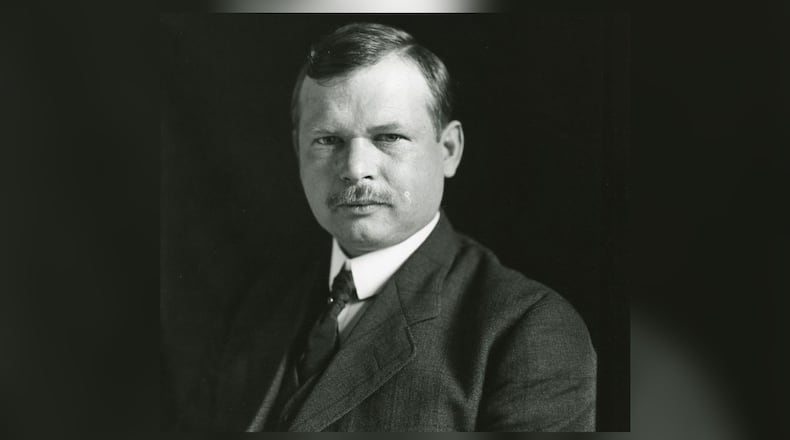French is widely known as the “father” of the OSU football stadium.
It’s one of the best-known sporting venues in America. It’s the fourth-largest on-campus facility in the nation, with a seating capacity of over 100,000.
Last year, in recognition of the 100th anniversary of Ohio Stadium, Tom Archdeacon dug deep into French’s past and his impact on the sports world.
Famous classmates
French grew up in Dayton’s East End and attended the Fourth District School in the Oregon District.
There he became a classmate and friend of Paul Laurence Dunbar, who one day would become the acclaimed poet, novelist and playwright now revered as one of Dayton’s favorite sons. French’s desk was right behind Dunbar’s when they were in the eighth grade.
In the ninth grade, the pair moved on to Central High School where they met and became fast friends with classmate Orville Wright.
Wright and French remained lifelong friends.
In 1891, French enrolled at Ohio State and later graduated with a mechanical engineering degree. Soon after, he started teaching at OSU.
French spent 47 years as a member of Ohio State’s School of Engineering faculty.
De facto athletic director
The Ohio State football club started in 1890 and played games at Recreation Park, a considerable walking distance from the campus.
When students rallied to get a field closer to campus, French picked up the cause and Ohio Field was opened in 1898. It had 5,000 wood-plank seats and was open on one side, enabling fans to pull up in their horse and buggies and watch from their vehicles.
French was the school’s de facto athletics director in the late 1890s and the turn of the century. He organized teams for various sports, lined up coaches and scheduled competitions with area colleges.
Ohio Stadium
In 1912 – realizing Ohio State needed to play bigger-name football opponents if it one day wanted to rival the game’s gridiron heavyweights back then: Harvard, Yale and Princeton – he pushed the school to join the Western Conference, which eventually would be known as the Big Ten.
Critics dismissed his dreams of a big-time football stadium that would replace Ohio Field, which initially held 5,000 seats and later, at his prompting, had expanded to 10,000.
While his views drew many naysayers, he had a like-minded backer in OSU president William Oxley Thompson, who eventually appointed him to head OSU’s athletic board.
In 1918, French hired 32-year-old architect Howard Dwight Smith, a fellow Daytonian who’d graduated from Steele High, to create designs for a new stadium.
Construction of the stadium – horseshoe-shaped to allow track events to be run out the open end – began in the summer of 1921.
With its initially seating capacity of 66,210, Ohio Stadium was the largest poured concrete structure in the world. It cost $1.49 million and was ready for the Oct. 7, 1922 opener against Ohio Wesleyan.
The stadium was the nation’s first two decked structure.
But the official dedication was two weekends later – against rival Michigan – and it drew a massive crowd of anywhere from 72,000 to 78,000.
Today, Ohio State football has one of the hottest tickets in the college game.
French – the man who planted the seeds of so much success – is remembered on the OSU campus with French Field House, the home to indoor track meets and several sports facilities.
About the Author




